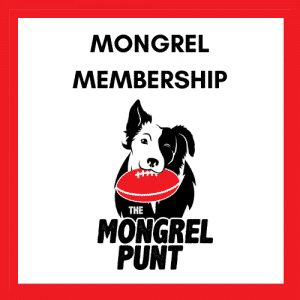At just over the halfway point of last year’s NBA season, the Los Angeles Lakers were floundering, neither in contention for the championship nor possessing their upcoming first-round draft pick to begin a rebuild. They looked close to done.
With a record of 25-31, the Lakers were 13th place in their conference (out of just 15 team) with an injury to their star player, LeBron James seeing him sidelined for the foreseeable future.
Now I know what you’re probably thinking, “what the hell does this have to do with AFL?” I’ll get there.
The Lakers turned their season around, sneaking into the playoffs with a record of 43-39, progressing to the Western Conference Finals where they eventually succumbed to the eventual champions, the Denver Nuggets.
So how did they turn their season around?
The NBA has an in-season trade period. Ah… now you see where I’m going with this.
The Lakers made several moves, acquiring players to fill obvious flaws in their team, whilst offloading those hindering the team’s success.
The idea of a trade period being introduced into the AFL season has long been just that, an idea. However, both the AFL and the AFL Players Association agreed in principle on it being introduced to our game during last year’s Collective Bargaining Agreement. The idea of a trade period now seemingly becoming more of a reality, will provide the fans with another layer of excitement and optimism as well as allow the players and clubs to actively seek opportunity for improvement.
A quick note on some positives
- A midseason trade period would see player movement continue to increase.
- It introduces an element of drama and unpredictability during the season.
- This may rival or exceed the excitement levels and rumour mills often circulating around the traditional end-of-season trade period and can enhance the overall entertainment value of the sport as it generates discussion amongst fans.
- It provides additional storylines and narratives, creating a buzz around potential player movements and team improvements.
Hope is a powerful emotion, and with the addition of the in-season trade period, North Melbourne tragics and fans of other struggling teams can cling to the hope where their team sucks just a little less, via a trade.
The introduction of a trade period in the AFL elevates the importance of competent list management to unprecedented levels. The individuals in these positions serve as the architects of a team’s roster, responsible for identifying talent, negotiating trades, and strategically building a competitive squad. With the opportunity for mid-season player movements, list managers must possess keen analytical skills to assess team needs as they evolve, evaluate potential trade targets, and navigate complex salary cap regulations.
The importance of a list manager cannot be understated, we need only look at the last two premiers (Collingwood & Geelong), who have been active in the realm of recruitment.
Two years ago, we saw the Cats finally break through, winning the flag after several deep finals runs. Their success can partially be accredited to the acquisitions of gun forward Jeremy Cameron, as well as Tyson Stengle who joined Geelong as a delisted free agent after starring at SANFL level in 2021.
The Magpies followed suit last season, setting out to recruit players who addressed weaknesses in their team. Recruiting players such as Bobby Hill, who went on to win the Norm Smith Medal, former Brownlow Medallist Tom Mitchell, as well as a much-needed key forward in Daniel McStay. These three additions all made important contributions throughout the season on their way to the premiership. And then there was Billy Frampton, whose role on Grand Final day has been lauded by some and ridiculed by others. He has a premiership medallion. You likely don’t.
In a landscape where every transaction can significantly impact a team’s fortunes, competent list management serves as the linchpin of organisational success, wielding immense influence over a team’s trajectory and standing as key drivers of competitive advantage in the AFL.
The mid-season trade period could also give more power to clubs to move players who are eyeing the door. Pending free agents that are set on leaving could be moved prior to the off season. Players in the past who have walked away from clubs for nothing in return (except draft compensation), could be exchanged for another player of value halfway through the season.
Injury-hit clubs could address unforeseen holes in their list that may have arisen throughout the year. For instance, let’s say that the mid-season trade period was around last season. Brodie Grundy, who had fallen out of favour with the Demons could have been traded to a club like port Adelaide who were at times relying on Jeremy Finalyson to perform ruck duties.
Sides that have fallen out of contention of finals or are looking to make a tilt at the premiership could either identify as “buyers” or “sellers”. Trading away potential draft picks in order to make a late season run at finals or exchanging older players who won’t be a part of the team’s next premiership for younger talent and or draft picks.
Although I speak of a world where exchanges are happening left, right and centre, we must also take into consideration that unlike the NBA or other foreign leagues, AFL players must agree to be a part of a trade. This coupled with the fact that relocation is difficult due to smaller wages as opposed to the big leagues, and means that the AFL will still be a fairly static league… for now.
The hurdles mentioned above may become less pertinent as the AFL continues to grow both financially and in popularity. By the end of the Collective Bargaining Agreement in 2027, the average AFL men’s salary will be $519,000, up from $387,000 last year. This statistic coupled with the increase in total club memberships from 756,717 in 2013 to 1,264,952 last season shows that the players and organisations are in far superior financial positions. As players continue to make more money, and the sport becomes more popular, the AFL will in turn become even more business-like. They will eventually follow the trend of other leagues around the world by treating players like assets, thus retracting their ability to decline club approved trades. This should lead to heightened movement, drama, and interest throughout the season.
In conclusion, the potential introduction of a mid-season trade period in the AFL represents a significant shift in the league’s landscape, mirroring the strategic manoeuvres seen in other sports leagues around the world. As clubs navigate the complexities of player movement and roster construction, the astuteness of list managers becomes increasingly vital. Moreover, the proposed trade period offers clubs greater flexibility and agency in shaping their lists, offers players greater opportunity, and potentially revolutionises the dynamics of team-building strategies. However, it’s essential to acknowledge the unique challenges and constraints inherent to the AFL, including player consent and logistical considerations, which may temper the frequency and scale of trades.
Nonetheless, with careful planning and execution, the introduction of a mid-season trade period could herald a new era of strategic innovation and competitiveness in Australian Rules football.
Mid-season trades – yay, or nay?


